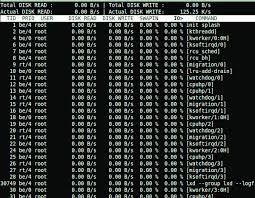Unlocking Network Insights with nmon Network Monitoring Tool
The Power of nmon Network Monitoring Tool
Network monitoring is a critical aspect of maintaining the performance and security of computer systems. Among the various tools available for this purpose, nmon stands out as a powerful and versatile option for monitoring network activity.
What is nmon?
nmon, short for “Nigel’s Monitor,” is a performance monitoring tool originally developed for AIX (Advanced Interactive eXecutive) systems. Over time, it has been adapted for other Unix-like operating systems, including Linux. nmon provides users with detailed insights into system performance metrics, including CPU usage, memory utilization, disk activity, and most importantly, network activity.
Key Features of nmon Network Monitoring
- Real-time Monitoring: nmon allows users to monitor network activity in real-time, providing up-to-the-minute data on network traffic and performance.
- Detailed Statistics: The tool offers detailed statistics on network throughput, packet loss, error rates, and other key metrics that help in diagnosing network issues.
- Customizable Views: Users can customise the display to focus on specific aspects of network performance that are most relevant to their needs.
- Data Export: nmon allows users to export monitoring data for further analysis or reporting purposes.
How to Use nmon for Network Monitoring
To start monitoring your network using nmon, simply run the command with the appropriate options specifying that you want to monitor network activity. The tool will then display a comprehensive view of your system’s network performance metrics in real-time.
nmon is a valuable tool for system administrators, network engineers, and anyone responsible for maintaining the health and efficiency of computer networks. By leveraging its capabilities for monitoring network activity, users can proactively identify bottlenecks, troubleshoot connectivity issues, and optimise overall network performance.
Understanding Nmon: Usage, Open Source Status, Linux Utility, Reporting, Analysis, and Setup
- What is nmon used for?
- Is nmon open source?
- What is the nmon utility for Linux?
- What is a nmon report?
- How to analyze nmon?
- How to setup nmon?
What is nmon used for?
Nmon, short for “Nigel’s Monitor,” is a versatile performance monitoring tool widely used to track various system metrics on Unix-like operating systems, including Linux. One of the key areas where nmon excels is in network monitoring. System administrators and network engineers often turn to nmon to gain real-time insights into network activity, such as throughput, packet loss, error rates, and overall network performance. By using nmon for network monitoring, users can effectively diagnose network issues, optimise connectivity, and ensure the smooth operation of their computer networks.
Is nmon open source?
The frequently asked question regarding nmon network is whether it is open source. nmon, developed by Nigel Griffiths, is indeed an open-source tool. Being open source means that the tool’s source code is freely available for users to view, modify, and distribute according to the terms of its licensing agreement. This openness fosters collaboration within the community, encourages transparency in development, and allows users to tailor the tool to suit their specific needs. As an open-source tool, nmon embodies the spirit of shared knowledge and innovation that characterises many software projects in the open-source ecosystem.
What is the nmon utility for Linux?
The nmon utility for Linux is a powerful monitoring tool that provides detailed insights into system performance metrics, including CPU usage, memory utilization, disk activity, and network activity. Specifically focusing on network monitoring, nmon enables users to track network throughput, packet loss, error rates, and other key networking metrics in real-time. By utilising the nmon utility for Linux, users can effectively monitor and analyse their network performance to identify bottlenecks, troubleshoot connectivity issues, and optimise overall network efficiency.
What is a nmon report?
A nmon report is a comprehensive summary of system performance metrics generated by the nmon monitoring tool. This report provides detailed insights into various aspects of system operation, including CPU usage, memory consumption, disk activity, and crucially, network performance. By analysing a nmon report, users can gain a clear understanding of how their network is performing, identify potential bottlenecks or issues affecting network efficiency, and make informed decisions to optimise network operations. The nmon report serves as a valuable resource for system administrators and network engineers seeking to monitor and improve the performance of their systems.
How to analyze nmon?
Analyzing nmon data is a common query among users seeking to make sense of the performance metrics provided by the tool. To effectively analyse nmon output, users can start by understanding the key parameters being monitored, such as CPU usage, memory consumption, disk activity, and network performance. By reviewing these metrics over time and correlating them with system activities or events, users can identify patterns, anomalies, or areas of improvement within their network infrastructure. Additionally, exporting nmon data for further analysis using tools like spreadsheets or specialised monitoring software can provide deeper insights into system performance trends and help in making informed decisions to optimise network efficiency and reliability.
How to setup nmon?
Setting up nmon for network monitoring involves a straightforward process that can be easily accomplished by following a few simple steps. To begin, ensure that nmon is installed on your system. Once installed, you can initiate nmon with the appropriate command-line options to activate network monitoring. Specify the desired parameters for monitoring network activity, such as interface selection and data refresh intervals. By configuring nmon effectively, users can gain valuable insights into their network performance metrics in real-time, facilitating proactive management and optimisation of their network infrastructure.




